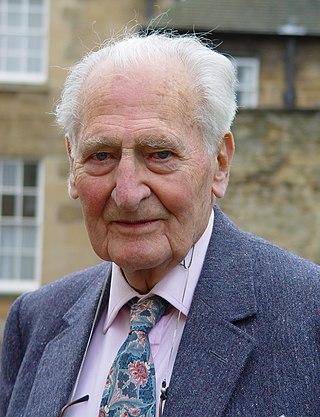Related Research Articles

Giggleswick School is a public school in Giggleswick, near Settle, North Yorkshire, England.

The Vice-Chamberlain of the Household is a member of the Royal Household of the Sovereign of the United Kingdom. The officeholder is usually a senior government whip in the British House of Commons ranking third or fourth after the Chief Whip and the Deputy Chief Whip. The Vice-Chamberlain is the Deputy to the Lord Chamberlain of the Household and, like the Lord Chamberlain, carries a white staff of office when on duty on state occasions.

The Buchanan Medal is awarded by the Royal Society "in recognition of distinguished contribution to the medical sciences generally". The award was created in 1897 from a fund to the memory of London physician Sir George Buchanan (1831–1895). It was to be awarded once every five years, but since 1990 the medal has been awarded every two years.

Scorton Grammar School is a former grammar school that was located in Scorton village, in Richmondshire, North Yorkshire, England.

The Lieutenant of the Tower of London serves directly under the Constable of the Tower. The office has been appointed at least since the 13th century. There were formerly many privileges, immunities and perquisites attached to the office. Like the Constable, the Lieutenant was usually appointed by letters patent, either for life or during the King's pleasure.

Justice of the Common Pleas was a puisne judicial position within the Court of Common Pleas of England and Wales, under the Chief Justice. The Common Pleas was the primary court of common law within England and Wales, dealing with "common" pleas. It was created out of the common law jurisdiction of the Exchequer of Pleas, with splits forming during the 1190s and the division becoming formal by the beginning of the 13th century. The court became a key part of the Westminster courts, along with the Exchequer of Pleas and the Court of King's Bench, but with the Writ of Quominus and the Statute of Westminster, both tried to extend their jurisdiction into the realm of common pleas. As a result, the courts jockeyed for power. In 1828 Henry Brougham, a Member of Parliament, complained in Parliament that as long as there were three courts unevenness was inevitable, saying that "It is not in the power of the courts, even if all were monopolies and other restrictions done away, to distribute business equally, as long as suitors are left free to choose their own tribunal", and that there would always be a favourite court, which would therefore attract the best lawyers and judges and entrench its position. The outcome was the Supreme Court of Judicature Act 1873, under which all the central courts were made part of a single Supreme Court of Judicature. Eventually the government created a High Court of Justice under Lord Coleridge by an Order in Council of 16 December 1880. At this point, the Common Pleas formally ceased to exist.
Michael Lok was an English merchant and traveller, and the principal backer of Sir Martin Frobisher's voyages in search of the Northwest Passage. He was the governor of the failed Cathay Company formed with Frobisher in 1577.
Eastman's Royal Naval Academy, originally in Southsea and later at Winchester, both in England, was a preparatory school. Between 1855 and 1923 it was known primarily as a school that prepared boys for entry to the Royal Navy. Thereafter, it was renamed Eastman's Preparatory School and continued until the 1940s. According to Jonathan Betts, it was "considered one of the top schools for boys intended for the Navy".
Hugo or Hugh Moises was a notable English schoolmaster.
Edward Montagu Butler was an English first-class cricketer and schoolmaster.
Arthur Allan Gomme (1882-1955) was a British librarian, historian of technology and folklorist.
References
- ↑ The endowed charities of the City of London (1829), pp. 42–43
- ↑ "Mercers' School History – The OLD MERCERS' CLUB".
- ↑ "Death of a School", in The Times , dated 24 March 1958, p. 5
- ↑ "Young People & Education | Mercers". mercers.co.uk.
- ↑ "The Oxford Dictionary of National Biography" . Oxford Dictionary of National Biography (online ed.). Oxford University Press. 2004. doi:10.1093/ref:odnb/54584.(Subscription or UK public library membership required.)
- ↑ Woolrich, A.P. (2004). "Gomme, Arthur Allan (1882–1955), librarian and historian of technology" . Oxford Dictionary of National Biography (online ed.). Oxford University Press. doi:10.1093/ref:odnb/54473.(Subscription or UK public library membership required.)
- ↑ James, E.O. (1955). "Obituary Arthur Allan Gomme, M.B.E.". Folklore. 66: 193–194. doi:10.1080/0015587X.1955.9717454.
- ↑ Heaney, Michael (2004). "Kennedy, Douglas Neil (1893–1988), folk musician and dancer" . Oxford Dictionary of National Biography (online ed.). Oxford University Press. doi:10.1093/ref:odnb/54871.(Subscription or UK public library membership required.)
- "Mercers' School", in The Times , 4 December 1933, p. 9